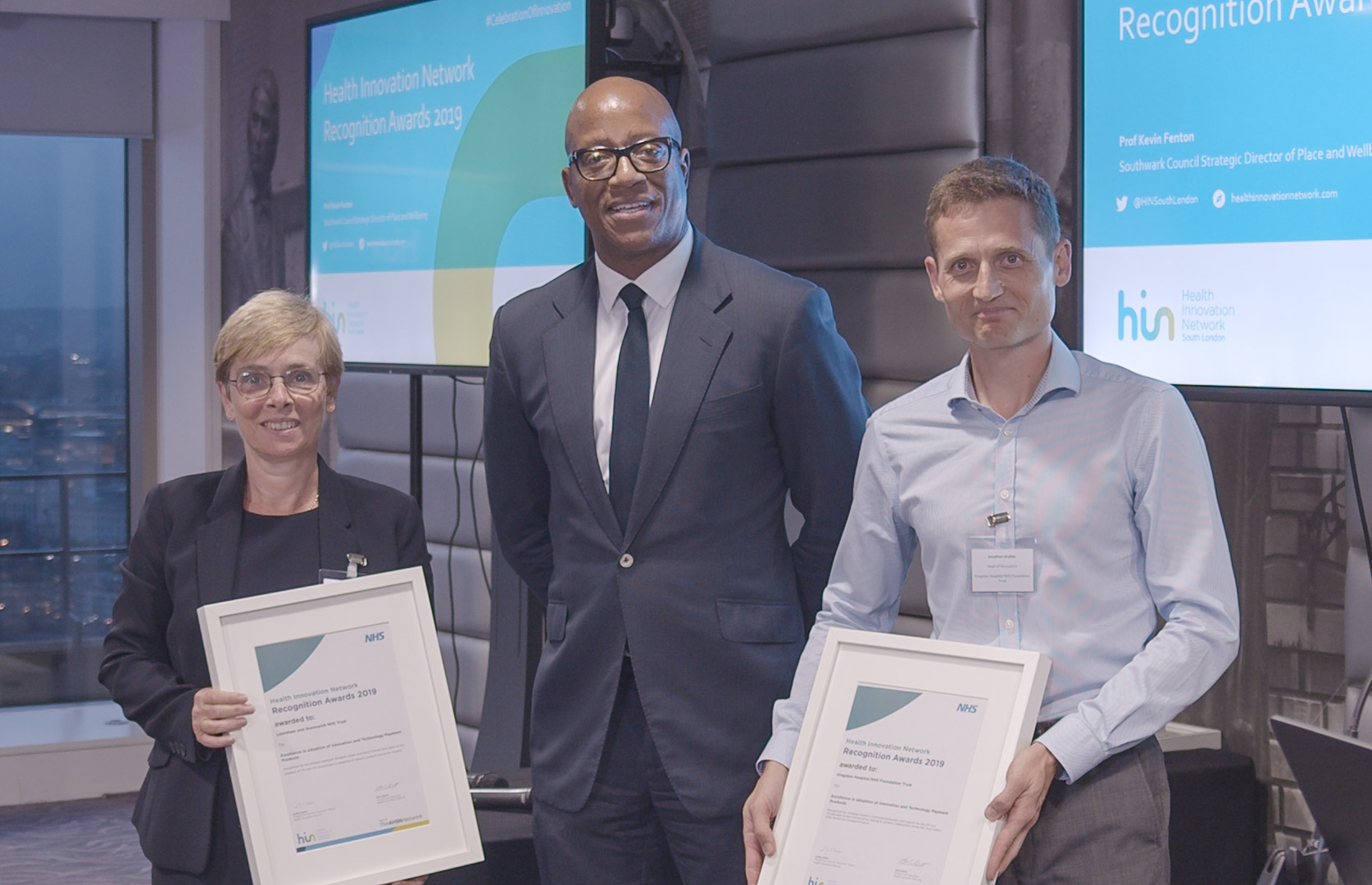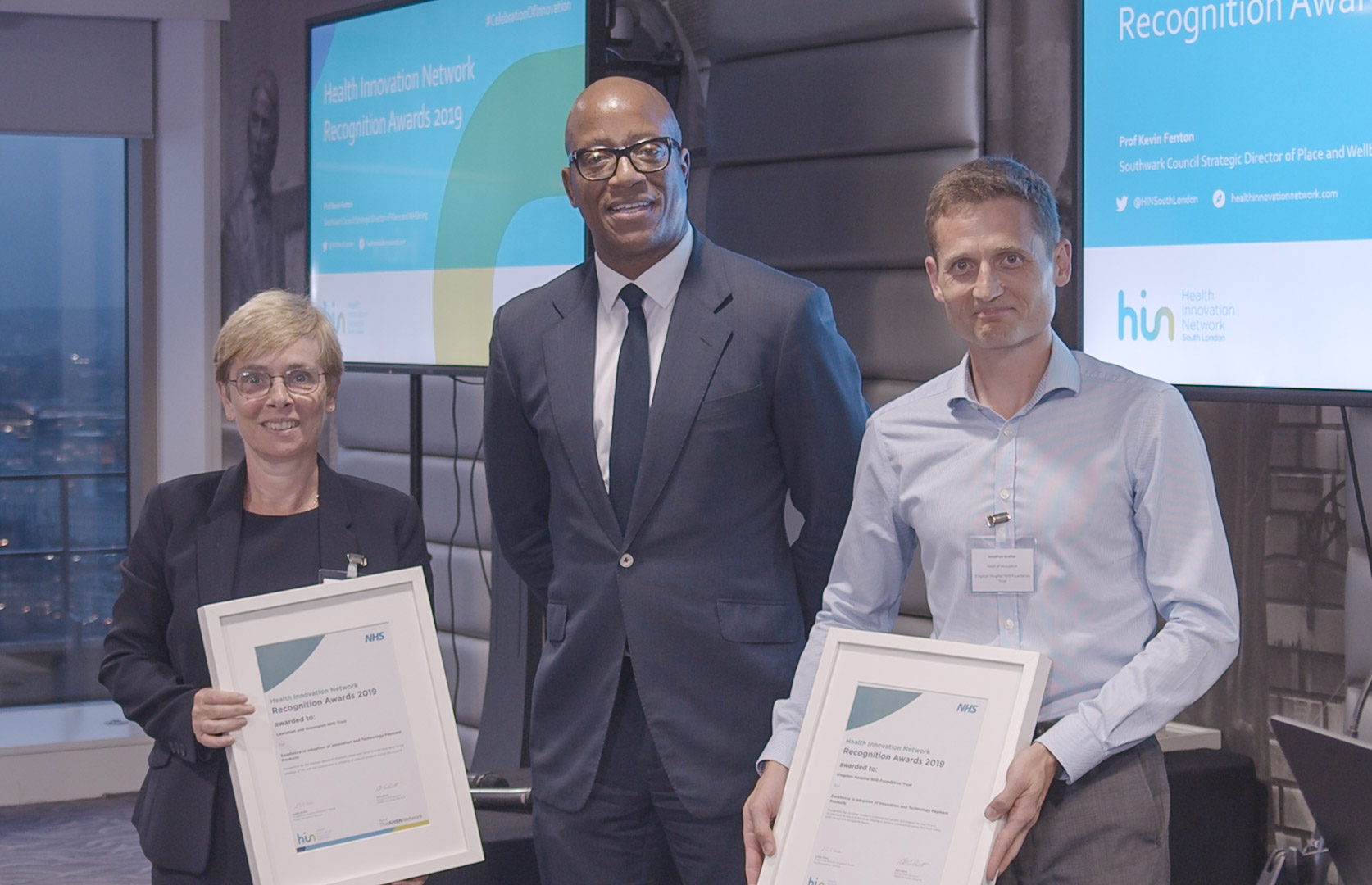Winners of the 2019 Recognition Awards Announced
The Health Innovation Network (HIN) work together with a variety of health and care teams in south London to speed up the best of health and care for our communities. The HIN Recognition Awards 2019 celebrate some of the fantastic work and partnerships we are involved in.

Our membership is made up of organisations from across south London’s academic, local government and health and social care landscape. We work with acute and mental health trusts, clinical commissioning groups, community providers, local authorities, universities and third sector bodies.
Zoë Lelliott, Chief Executive of the Health Innovation Network said: “The enthusiasm and commitment across our membership to improve the lives of patients through innovation never ceases to inspire me. The Recognition Awards are a great opportunity to celebrate some of the very best work of our members. I am delighted the Health Innovation Network is highlighting examples of excellence in partnerships, Trusts and individuals in our community through these awards, and I congratulate the worthy winners.”
Over half of our team participated in the Recognition Awards in August 2019. We received many nominations and the winners were announced at the Health Innovation Network Award ceremony in Guy’s Hospital on Tuesday 24 September.
The results of the HIN South London 2019 Recognition Awards are:
Innovative Trust of the year
Winner: St George’s University Hospitals NHS Foundation Trust
Special credit is given to the innovation and improvement initiatives by Ben Wanless, the physiotherapy team, Emma Evans and the New Beginnings Experience Based Co Design project improving the experience of birth in theatres, and Edward Jebson’s work in adoption of innovation products.
Excellence in adoption of Innovation and Technology Payment (ITP) products
Winners: Lewisham & Greenwich NHS Trust
Special credit is given to Elizabeth Aitken and David Knevett’s strategic approach to the adoption of ITP with full commitment to adopting all relevant products across the hospital.
Winners: Kingston Hospital NHS Foundation Trust
Special credit is given to Jonathan Grellier for his continued enthusiasm and support for the ITP and Accelerated Access Collaborative, helping to achieve collaboration across the trust within both clinical and managerial teams.
Partnership of the year
Winners: Oxleas NHS Foundation Trust, South London and the Maudsley NHS Foundation Trust, South West London and St George’s Mental Health NHS Trust and the Metropolitan Police
Special credit is given to Rachel Matheson, Magda Berge, Jon Garrett and Superintendent Mark Lawrence representing the three trusts and the Metropolitan police who have worked together, sharing learning to help each other succeed to successfully implement Serenity Integrated Mentoring (SIM).
Innovator of the year
Winner: Chegworth Nursing Home (Sutton Homes)
Special credit is given to Rekha Govindan, the first care home nurse to create Coordinate My Care (CMC) plans single-handedly as part of the CMC in Care Homes project.
For more information on how we work with members on innovation projects please contact hin.southlondon@nhs.net.

